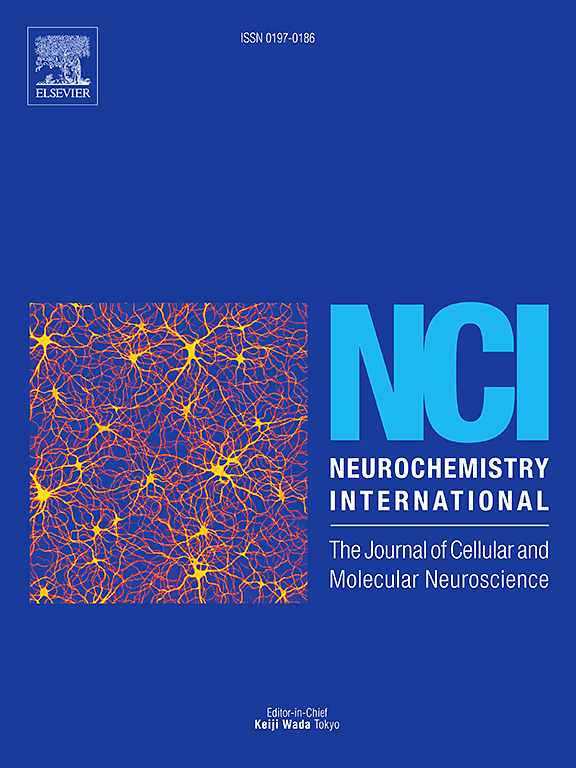Anti-inflammatory and analgesic effects of marine-derived antimicrobial peptide tilapia piscidin 3(TP3) in alleviating chronic constriction injury-induced neuropathic pain in rats
IF 4
3区 医学
Q2 BIOCHEMISTRY & MOLECULAR BIOLOGY
引用次数: 0
Abstract
Neuropathic pain has multiple etiologies, and many patients remain inadequately treated. The cyclic adenosine monophosphate (cAMP) signaling pathway plays a critical role in inflammatory responses, particularly through the upregulation of proinflammatory cytokines. This study aimed to investigate the anti-inflammatory and analgesic properties of the marine-derived antimicrobial peptide Tilapia Piscidin 3 (TP3), using a chronic constriction injury (CCI) model to simulate neuropathic pain. In vitro assays showed that TP3 exerted a dose-dependent inhibitory effect on lipopolysaccharide-induced proinflammatory cytokine expression in mouse BV-2 microglia and RAW 264.7 macrophages. Nociceptive behavioral tests revealed that intrathecal (IT) administration of TP3 alleviated CCI-induced mechanical allodynia and thermal hyperalgesia. Immunofluorescence analysis showed that IT TP3 significantly increased phosphodiesterase 4D (PDE4D) levels and decreased the expression of cAMP, brain-derived neurotrophic factor (BDNF), and tumor necrosis factor-α in astrocytes within the dorsal horn of the spinal cord in CCI rats. The antinociceptive effects of TP3 were abolished by the PDE4D inhibitor rolipram, highlighting the role of PDE4D-mediated modulation of the cAMP pathway in producing these effects. These findings suggest that TP3 may be a promising therapeutic agent for treating neuropathic pain by exerting anti-inflammatory and analgesic effects through regulation of the cAMP pathway.

海洋来源抗菌肽Piscidin 3(TP3)对大鼠慢性收缩性损伤神经性疼痛的抗炎镇痛作用
神经性疼痛有多种病因,许多患者仍未得到充分治疗。环腺苷单磷酸(cAMP)信号通路在炎症反应中起关键作用,特别是通过上调促炎细胞因子。本研究旨在通过慢性收缩损伤(CCI)模型模拟神经性疼痛,研究海洋来源抗菌肽罗非鱼Piscidin 3 (TP3)的抗炎镇痛作用。体外实验表明,TP3对脂多糖诱导的小鼠BV-2小胶质细胞和RAW 264.7巨噬细胞的促炎细胞因子表达有剂量依赖性的抑制作用。伤害性行为测试显示,鞘内给药TP3减轻了cci引起的机械异常性痛和热痛觉过敏。免疫荧光分析显示,IT TP3显著提高CCI大鼠脊髓背角星形细胞磷酸二酯酶4D (PDE4D)水平,降低cAMP、脑源性神经营养因子(BDNF)和肿瘤坏死因子-α的表达。PDE4D抑制剂罗利普兰可消除TP3的抗感知作用,这表明PDE4D介导的cAMP通路调节在产生这些作用中的作用。这些发现表明,TP3可能通过调节cAMP通路发挥抗炎和镇痛作用,成为治疗神经性疼痛的一种有前景的药物。
本文章由计算机程序翻译,如有差异,请以英文原文为准。
求助全文
约1分钟内获得全文
求助全文
来源期刊

Neurochemistry international
医学-神经科学
CiteScore
8.40
自引率
2.40%
发文量
128
审稿时长
37 days
期刊介绍:
Neurochemistry International is devoted to the rapid publication of outstanding original articles and timely reviews in neurochemistry. Manuscripts on a broad range of topics will be considered, including molecular and cellular neurochemistry, neuropharmacology and genetic aspects of CNS function, neuroimmunology, metabolism as well as the neurochemistry of neurological and psychiatric disorders of the CNS.
 求助内容:
求助内容: 应助结果提醒方式:
应助结果提醒方式:


